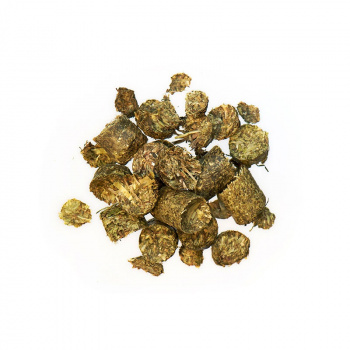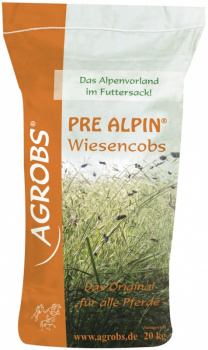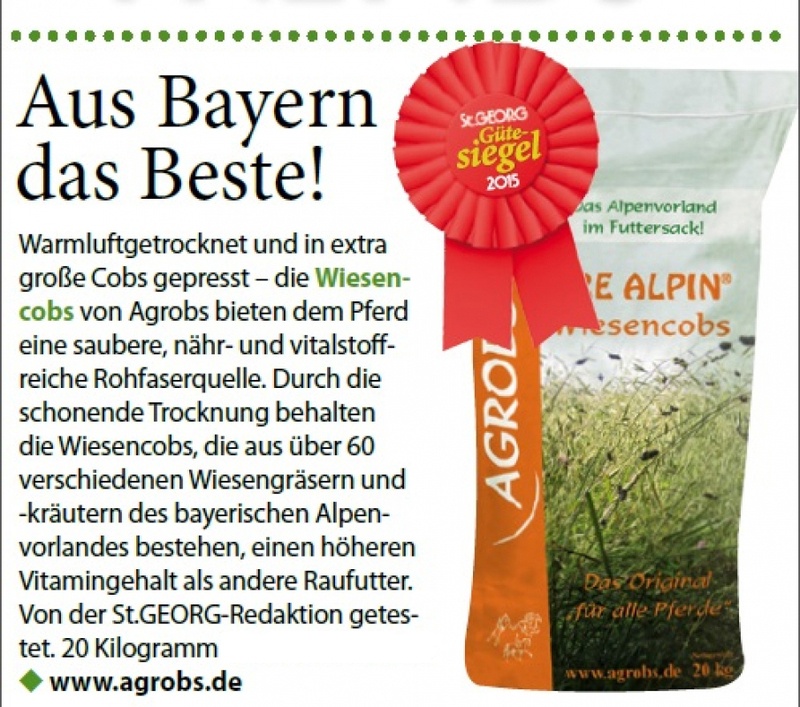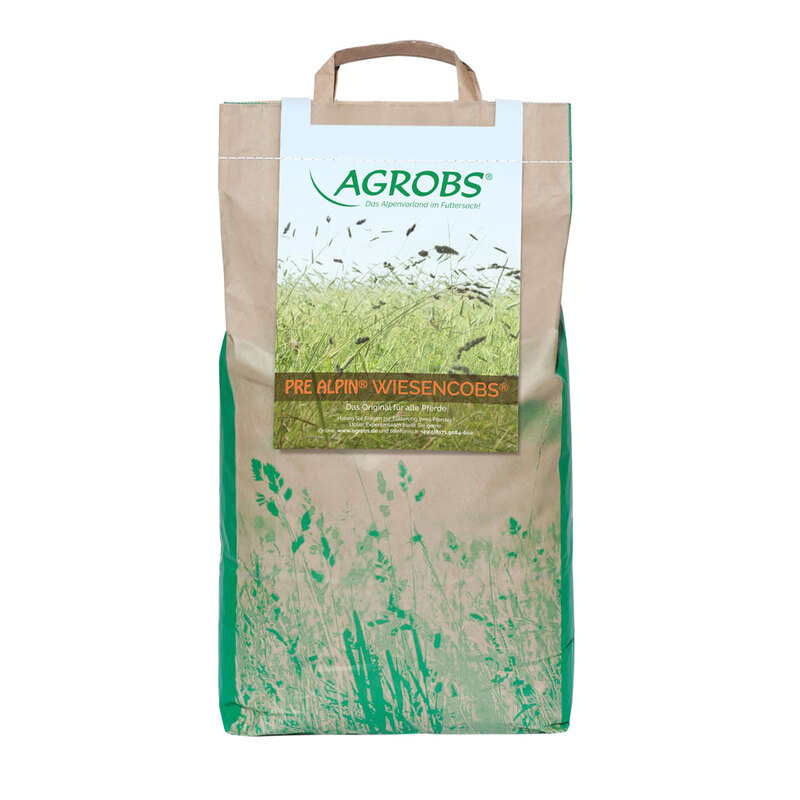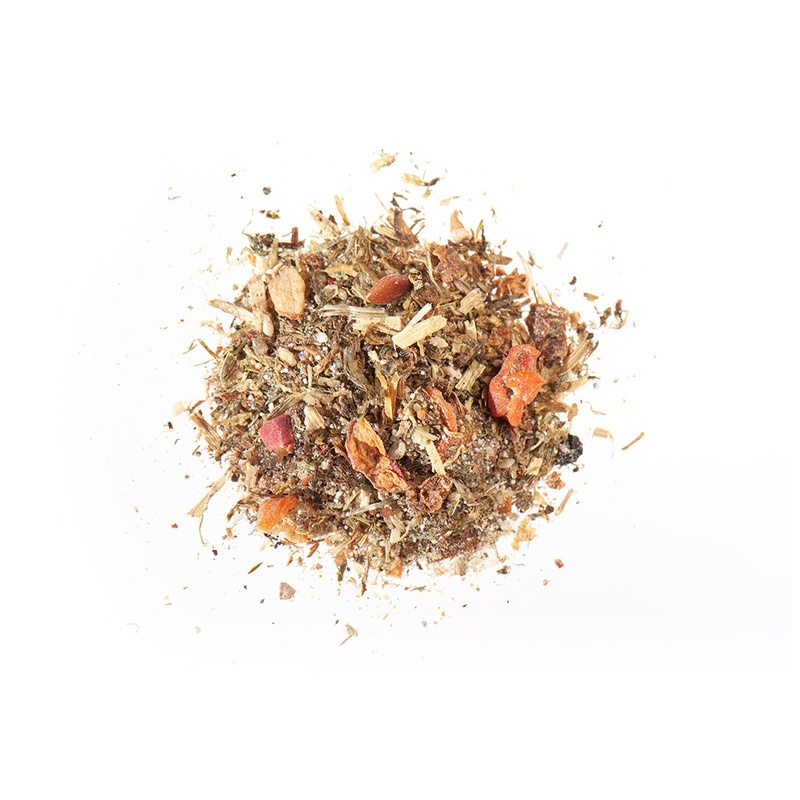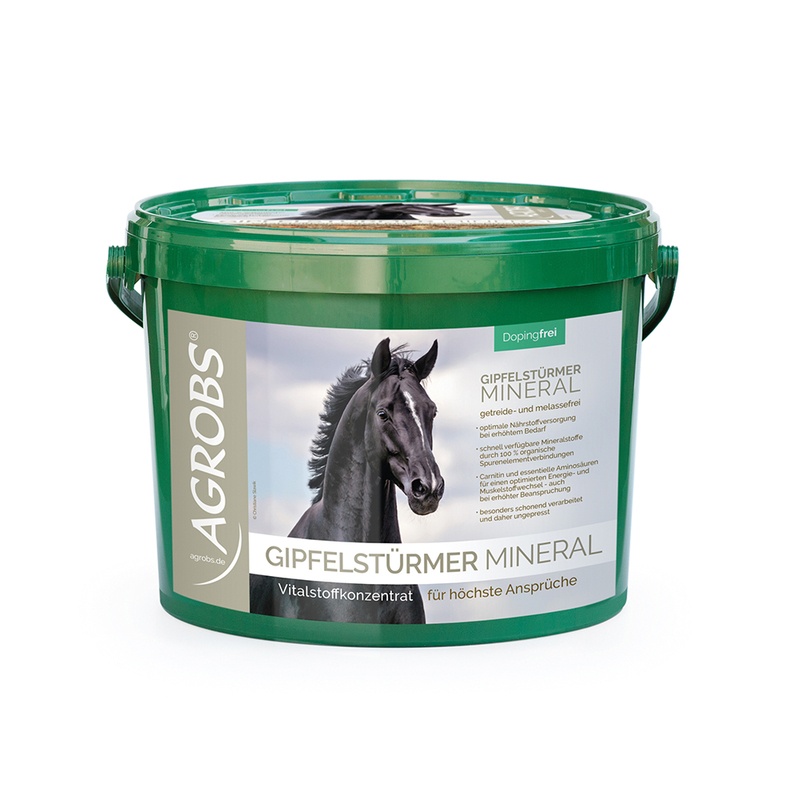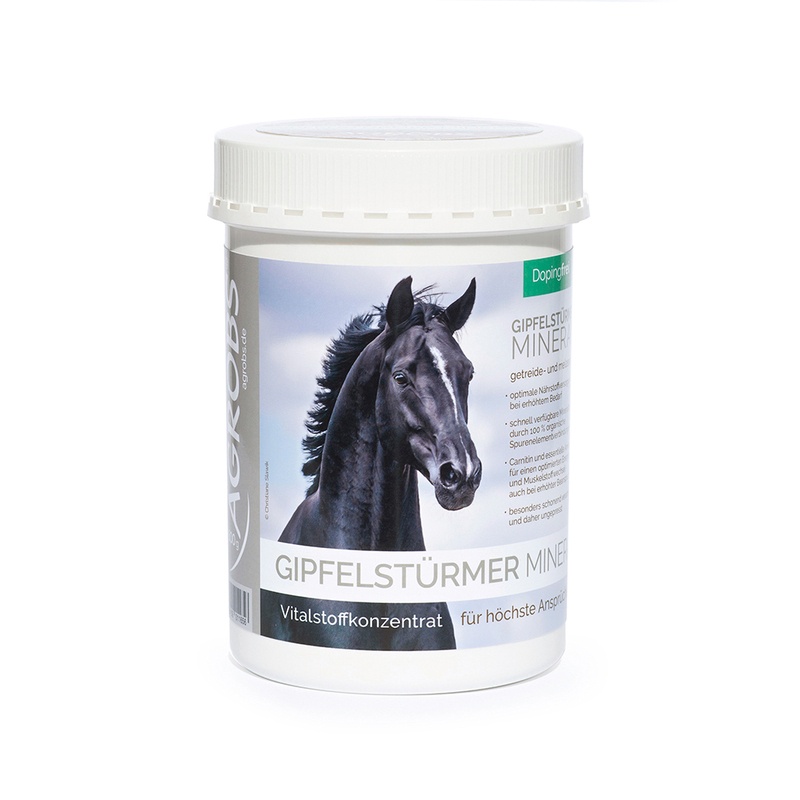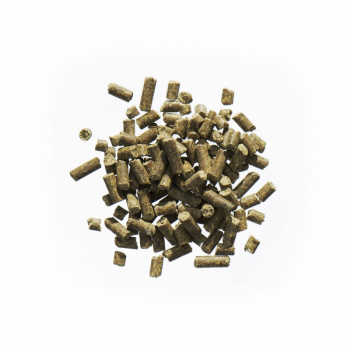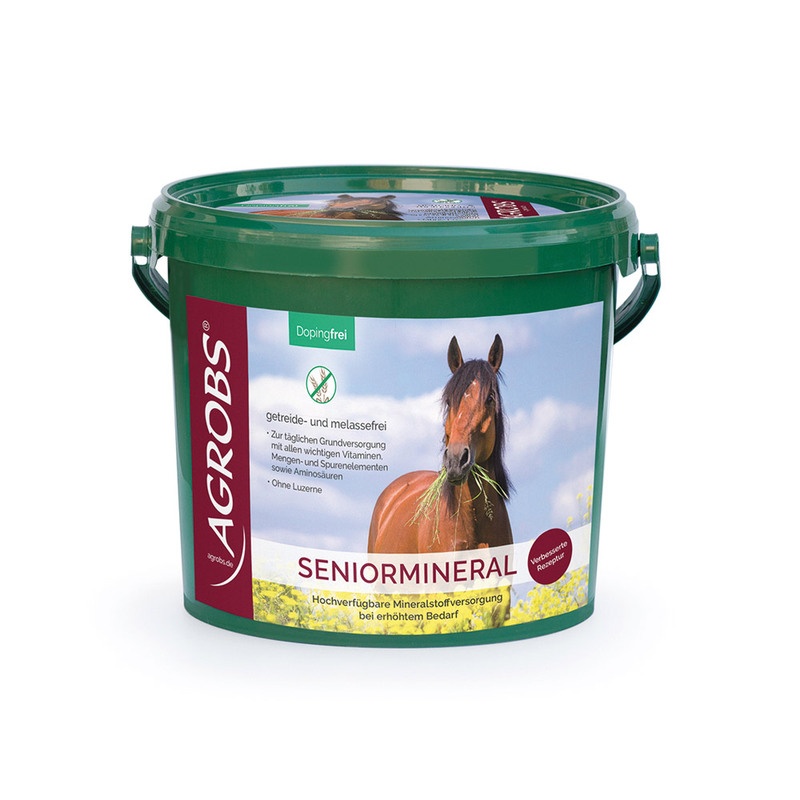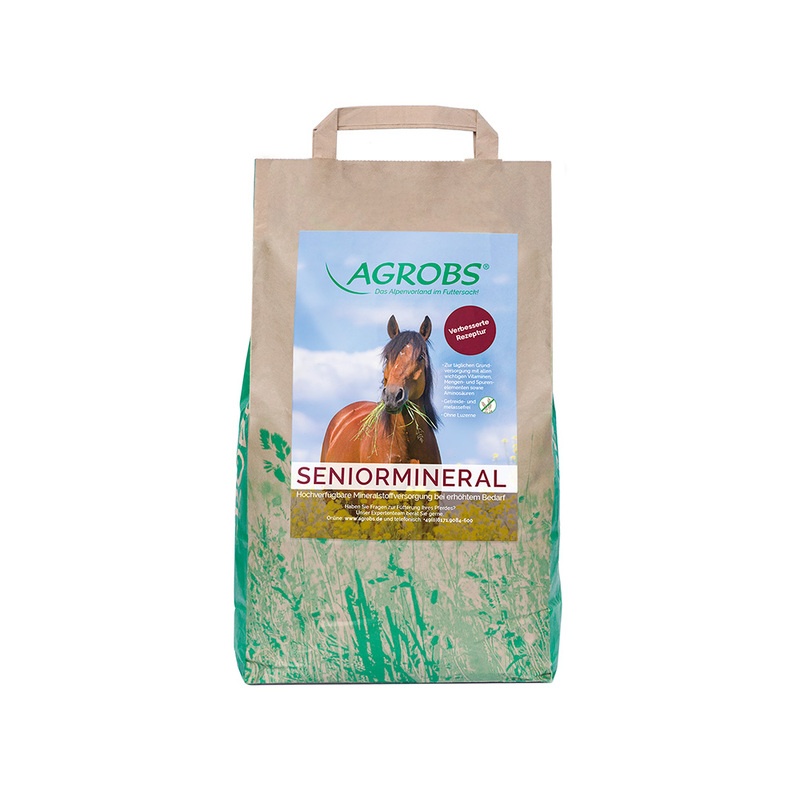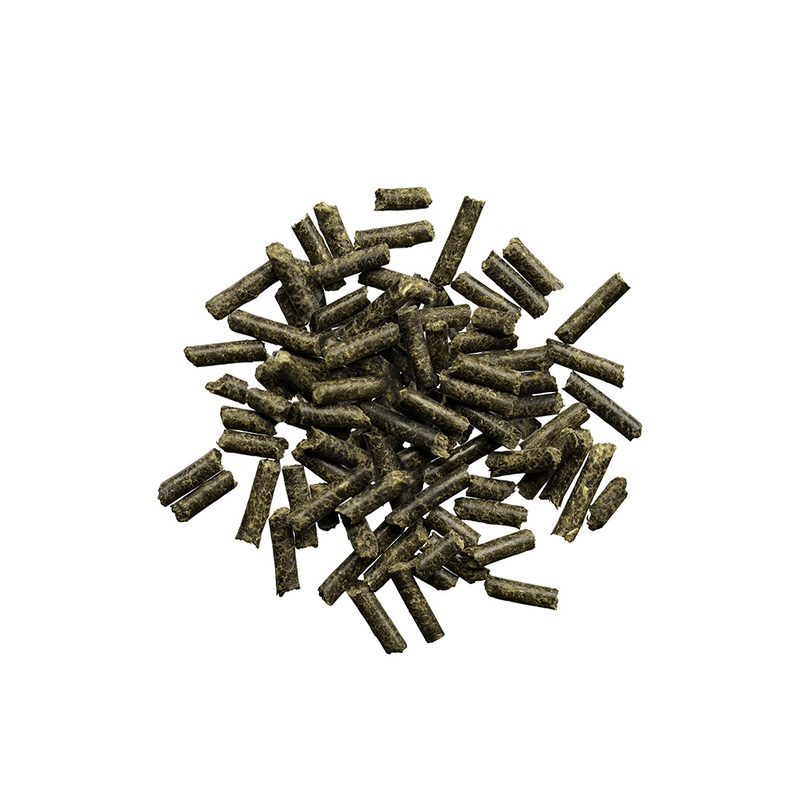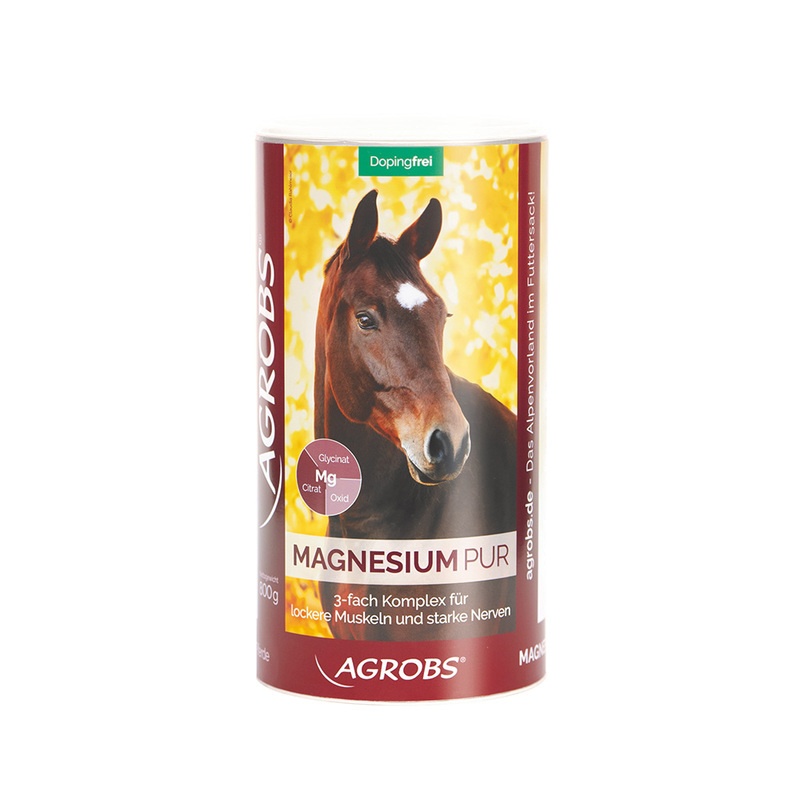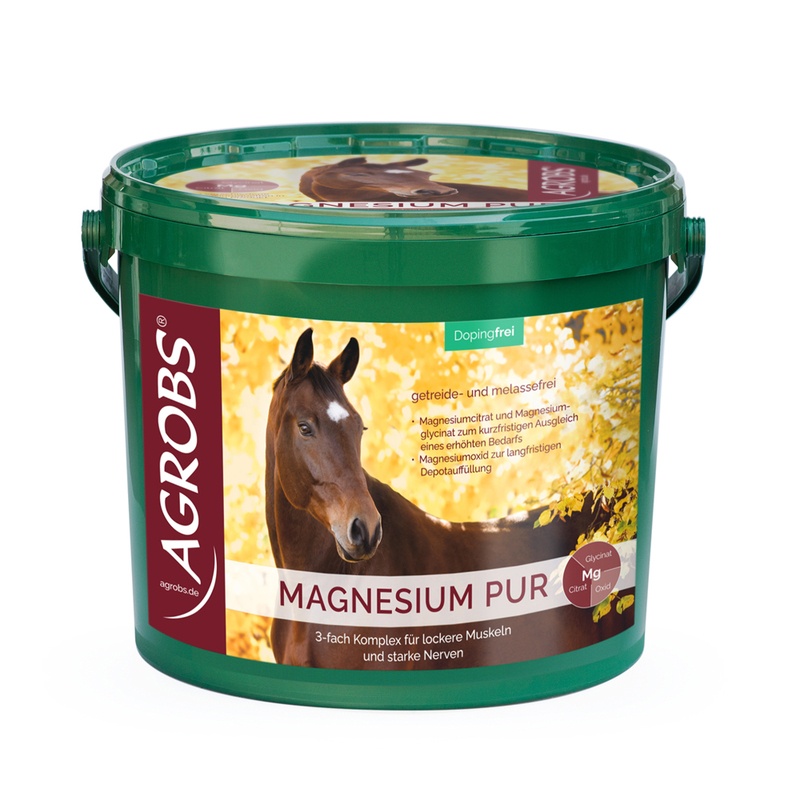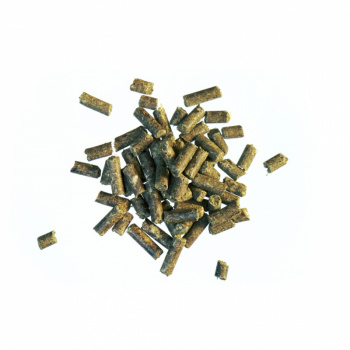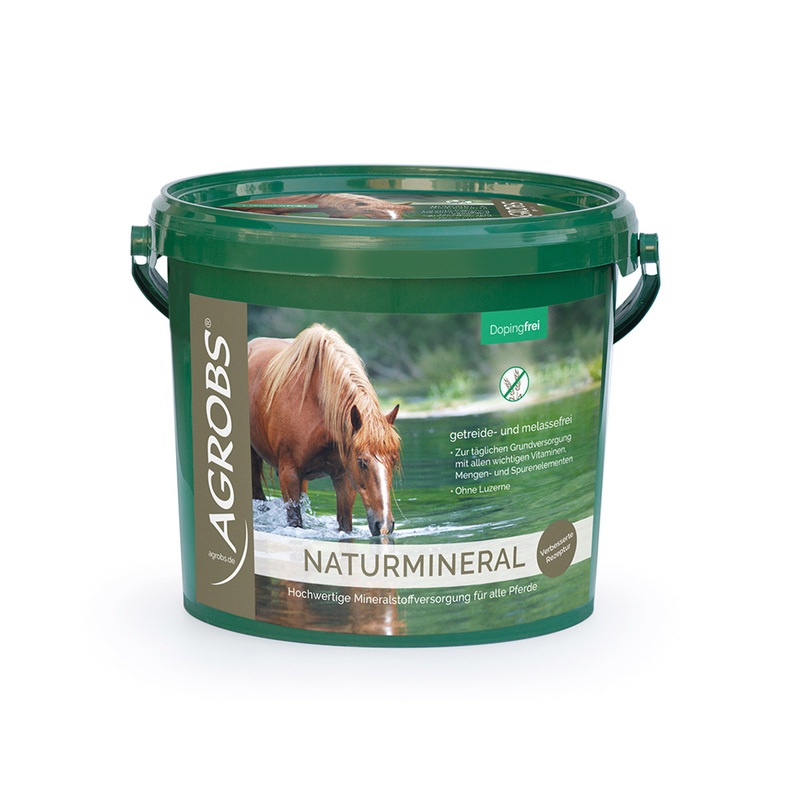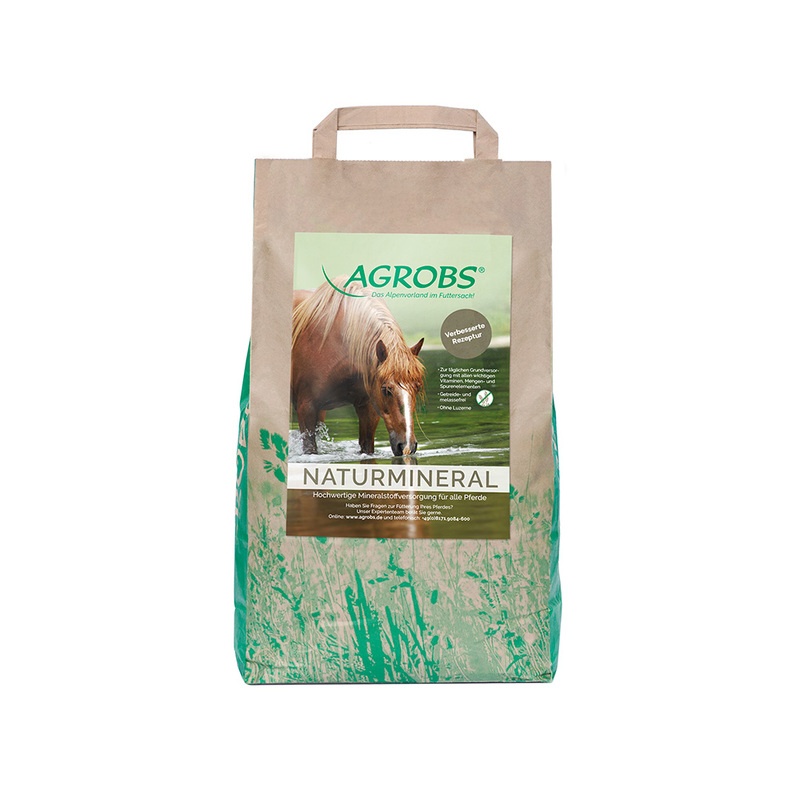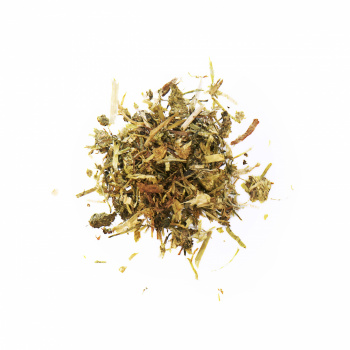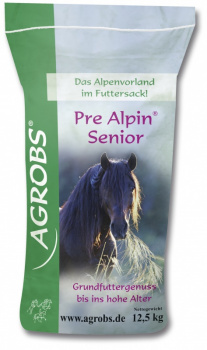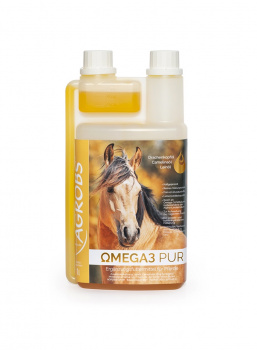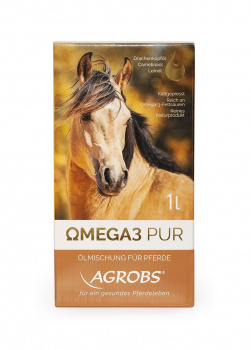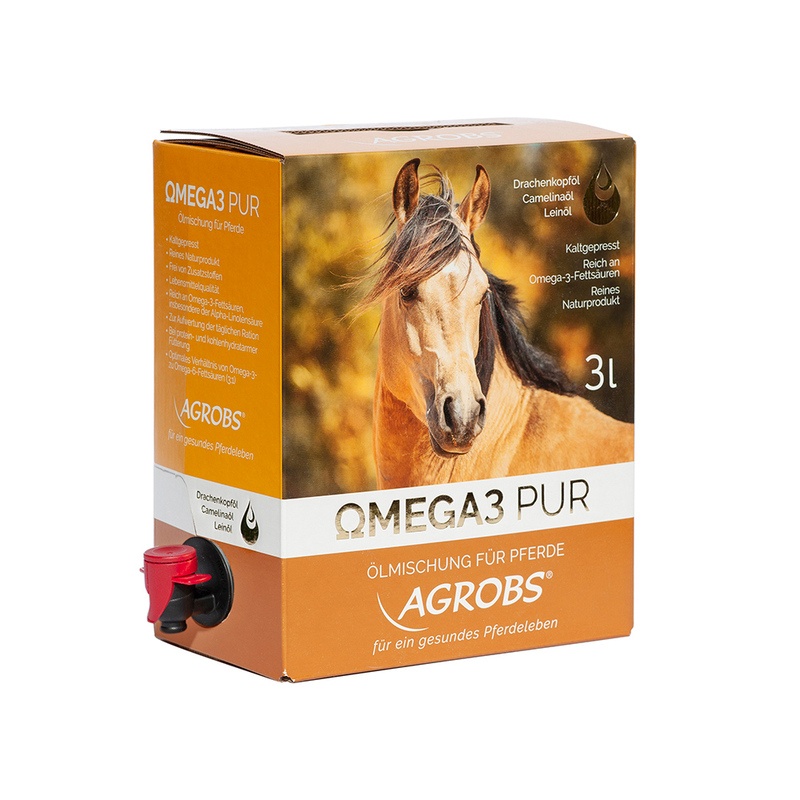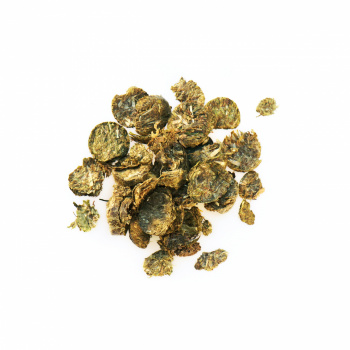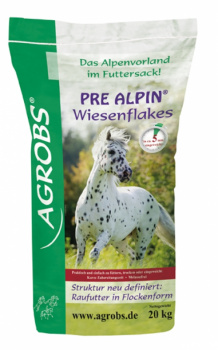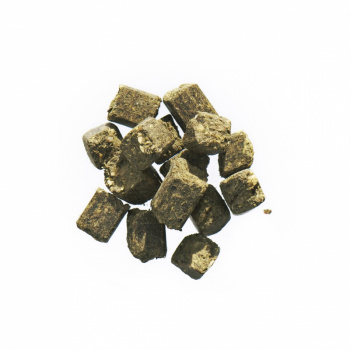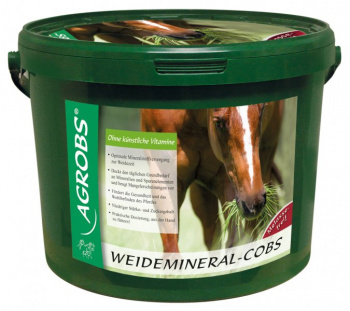
Feeding your horse after colic
Maybe your horse has experienced colic. Fortunately, most episodes of colic are mild when caught early and with appropriate treatment. But what should you know regarding feed?
What is colic?
The term “colic” does not describe a disease, but rather the symptom of abdominal pain. Horses may show this pain through restlessness, perspiration, frequent laying down and getting back up, rolling on the ground, pawing, and kicks to and looking at their belly. It should be noted that the degree of severity of symptoms does not always correspond to the actual degree of severity of colic.
The causes for these symptoms include digestive tract disorders such as cramps, obstruction, functional disorders, or inflammations.
Causes
The main cause of equine colic is a faulty diet. Other factors include too little exercise, stress, overwork, parasites, toxins, illness, and weather changes.
Feed factors that can cause colic:
- Too little forage
- Large amounts of concentrate feed in one meal
- Spoiled feed
- Sudden changes to feed
- Insufficient water intake
- Excess straw consumption
- Large amounts of young forage, clover, apples, or bread
- Excess daily cereal consumption (starches, glutens)
- Feed contaminated by poisonous plants
- Expanding feeds not soaked
Types of colic
Impaction colic (constipation)
Constipation refers to impaction of the intestinal tract. Some parts of the intestine are physically narrower and therefore more prone to impactions. It’s at these narrow parts of the intestine where feed particles may lodge and accumulate. This may include insufficiently soaked feed that collects and expands in the narrow intestinal areas, causing what is known as impaction colic. In rare cases, an intestinal parasite infestation may be so severe that the worms physically block the intestine. Both bulky, fibrous, hard feeds as well as those that have been too finely chopped can cause impaction by clumping together. Long intervals between meals and poor-quality feeds also contribute to impaction, as these diminish gut microflora activity.
In this respect, abrupt changes to feed, insufficient water intake, or too little exercise can also have negative effects.
Regular dental check-ups are essential and should be carried out by a vet at least once a year. If poor teeth result in inadequate mastication, the animal may swallow larger feed particles which can adversely affect further digestion.
Impactions can occur in different segments of the gastrointestinal tract. Impactions in the small intestine are mostly caused by the swallowing of larger feed particles. This most often happens when the prepared feed is chopped too small and the horse can no longer chew it properly. Impaction in this case most often occurs as the feed passes from the small to the large intestine. Most impactions occur in the large intestine, arising primarily through ingestion of large amounts of fibrous, woody material such as straw.
Obstructions
This involves obstruction of an intestinal section due to the presence of a foreign body ingested by the horse, for example hair or pieces of a hay net or plastic, to which mineral salts accumulate in the digestive tract, creating so-called concrements which can cause intestinal obstruction.
Obstruction can also be caused by feed. When feeds like clover, lucerne, or the still-often-used lawn mower clippings are not sufficiently chewed and broken down, these have the potential to clump and form what are known as phytobezoars in the gut. This process can be amplified by the ingestion of brans.
Both foreign bodies and the clumping of feeds may at first go undetected and only lead to problems and to intestinal obstruction when they arrive at narrow segments of the gut.
Faulty fermentation
Faulty fermentation involves changes to the microorganisms of the gut flora in composition, number, and activity. The increased formation of gas, acids or toxins will subsequently cause colic.
Malfermentation can also lead to complications. These may include irritation of the mucous membrane, increased intestinal peristalsis, and intestinal torsion.
Malfermentations are classified as primary or secondary. The primary form of malfermentation is mostly caused by high amounts of microbial content in feed. The secondary form of malfermentation is often the result of ingestion of too much feed, and thus its incomplete digestion. The partly-digested food passes into the large intestine where it is broken down by microbes, and this has a negative impact on the gut bacteria. The complete loss of muscle tone in the stomach and intestine (the muscles no longer contract) can also cause malfermentation.
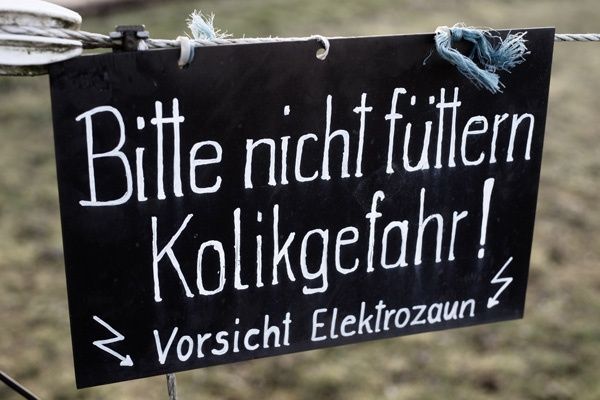 The primary reason for malfermentation is the excess use of feeds containing cereals. If the horse ingests too much high-cereal feed, undigested starch is passed into the large intestine where it is broken down by microbes. Too much undigested starch can cause dysbiosis (gut flora imbalance) in the large intestine. Malfermentation can also be caused by consumption of excess amounts of young grass, young clover, apples, bread, cabbage, or spoiled feed. Just as detrimental is when the horse is turned out regularly over the summer but then suddenly loses access to fresh grass, for example due to bad weather.
The primary reason for malfermentation is the excess use of feeds containing cereals. If the horse ingests too much high-cereal feed, undigested starch is passed into the large intestine where it is broken down by microbes. Too much undigested starch can cause dysbiosis (gut flora imbalance) in the large intestine. Malfermentation can also be caused by consumption of excess amounts of young grass, young clover, apples, bread, cabbage, or spoiled feed. Just as detrimental is when the horse is turned out regularly over the summer but then suddenly loses access to fresh grass, for example due to bad weather.
Stomach overload
The physiology of the equine stomach can cause a horse to experience stomach overload. In relation to a horse’s body size and mass, its stomach is very small, with a volume of just 15-20 litres. Problems with passage from the stomach or blockages (constipation) in the small intestine impede the further passage of the chyme, which backs up in the stomach and causes stomach overload.
Horses have very strong cardiac sphincters, so they cannot vomit to empty their stomachs. This creates the risk of stomach rupture.
Stomach overloads occur primarily after the uncontrolled intake of young pasture grass, concentrate feeds, or swelling and fermenting feed.
Sand colic
 This type of colic occurs from an excess intake of sand in combination with forage, leaves, or roots. On grazed pastures in particular, horses may ingest large amounts of sand along with the grass they eat. Sandy ground surfaces can also cause problems when horses eat hay from them. Horses have also been observed to intentionally eat sand if there is not enough forage available or if the horse is not getting enough minerals. The incidence of sand colic occurrences lies between 0.8 and 5% depending on region, and is highest in areas with sandy soils.
This type of colic occurs from an excess intake of sand in combination with forage, leaves, or roots. On grazed pastures in particular, horses may ingest large amounts of sand along with the grass they eat. Sandy ground surfaces can also cause problems when horses eat hay from them. Horses have also been observed to intentionally eat sand if there is not enough forage available or if the horse is not getting enough minerals. The incidence of sand colic occurrences lies between 0.8 and 5% depending on region, and is highest in areas with sandy soils.
The sand leads to irritations (lesions) of the intestinal mucosa and also accumulates in the digestive tract, causing partial blockages and disrupting the passage of feed. Alongside colic, typical symptoms of high sand intake also include watery stool, diarrhoea, emaciation, and decline in performance.
Spasmodic colic
Spasmodic colic refers to waves of contractions (spasmodic peristalsis) in the bowel. These spasms cause loud noises and abdominal pain. It is assumed that spasmodic colic is frequently associated with malfermentation.
Parasite-related colic
This form of colic involves circulatory disturbances and later to an insufficient blood supply to tissue. The reduced supply of oxygen to the tissue initially causes pain and, in extreme cases, to the death of the tissue. It can be caused by an acute worm infestation.
Recommended feeding after colic
Feeding after a colic episode can differ greatly from case to case, because you must begin with a different feed depending on the type of colic. If surgery was necessary, a specific feed plan may be required. Always consult your veterinary surgeon about what you should feed your horse after a colic episode.
The horse should not have access to feed during the acute phase of a colic. If the colic symptoms were successfully treated and have subsided, in most cases you can quickly begin to feed the horse again.
In the case of colic caused by stomach overload, gas formation or spasmodic colic after gas build-up, hygienically clean hay is a basic prerequisite for a good healing process. Oils can be used to support a foamy fermentation.
Do not feed the horse cereals or starchy feeds of any kind during the first 2 weeks after an episode of colic. Digestive disturbances may cause lots of undigested starch to enter the large intestine and cause further dysbiosis there.
In general, and especially after a colic, it is important that cereals be strictly limited. Even for healthy horses, the amount of starch in the feed ration should not exceed 200 g per 100 kg of body weight and per day. Depending on the cause of the colic and the sensitivity of the horse’s gastrointestinal tract, it may be wise to feed the horse cereal-free (or at least low-cereal) feeds beyond two weeks.
The horse’s magnesium level should also be checked as magnesium plays an important role in muscle relaxation and the regulation of peristalsis. A deficiency can also result in an increased tendency to spasmodic colic. If necessary, the targeted feeding of magnesium can have a supportive effect and contribute to the relaxation of the intestinal muscles.
After colonic constipation, excessive intake of hard-stalked feed in combination with poor quality should be avoided. Highly digestible sources of crude fibre (grass, hay, or hay substitutes) are recommended. The hay or grass can also be supplemented with beet pulp, which provides highly digestible crude fibre and contains pectin for healthy digestion.
After the constipation has subsided, it is important that the horse consumes water quickly.
Horses with sand colics should be fed large amounts of hay (2.5% of body mass). This seems to bring the most benefits to the horse's digestive tract with regard to sand deposits. Contrary to the popular opinion that psyllium husks help with the excretion of sand, studies have shown that this is not the case to a satisfactory extent.
Read more about how to feed your horse to prevent further colic attacks long-term in our article “The journey through the digestive tract”.
Agrobs products that can be fed to horses recovering from colic:
- Pre Alpin® Wiesencobs, Pre Alpin® Wiesenflakes and Pre Alpin® Senior are hay substitute products in pressed or non-pressed form.
- Agrobs AlpenGrün Mash contains no cereals, molasses, or artificial additives and supports digestion with fennel and caraway. Its psyllium and linseed are gentle on the gastrointestinal mucosa. This mash is also ideal for building up after illness.
- Agrobs Omega3 Pur oil delivers essential omega-3 fatty acids and also supports healthy digestion.
- Magnesium Pur can relax the intestinal muscles and provides the best possible support through the combination of 3 magnesium sources.
- Agrobs Naturmineral, Weidemineral Cobs, Seniormineral and Gipfelstürmer Mineral supply horses with important minerals, vitamins, and trace elements and contain no cereals or molasses.
Janina Beule, BSc. Organic Agriculture
Juni 2022, © AGROBS GmbH
Sources:
- Coenen, M.; Vervuert, I.: Pferdefütterung, 2020, Georg Thieme Verlag KG, Stuttgart
- Vervuert, I.: Fütterungsmanagement von Pferden nach Koliken, 2012, published in Pferdeheilkunde 28 (2012) 4 (July/August) 471-476
- Diera, M.: Feldstudie zur Fütterung von Kolikpatienten in Pferdekliniken insbesondere nach einer Laparotomie, 2017, from the Veterinary Science Department of the Veterinary Faculty of Ludwig-Maximilian University Munich, Chair for Animal Nutrition and Dietetics, URL: https://edoc.ub.uni-muenchen.de/21291/1/Diera_Melanie.pdf
- Brehm, W., Gehlen, H., Ohnesorge, B., Wehrend, A.: Handbuch Pferdepraxis, 2017, Enke Verlag in Georg Thieme Verlag KG, Stuttgart
- Loschelder, J.; Gehlen, H.: Sandkolik beim Pferd – Übersicht und Fallbeispiele, 2017, published in Pferdeheilkunde–Equine Medicine 33 (2017) 6 (November/December) 591-596, DOI 10.21836/PEM20170607




